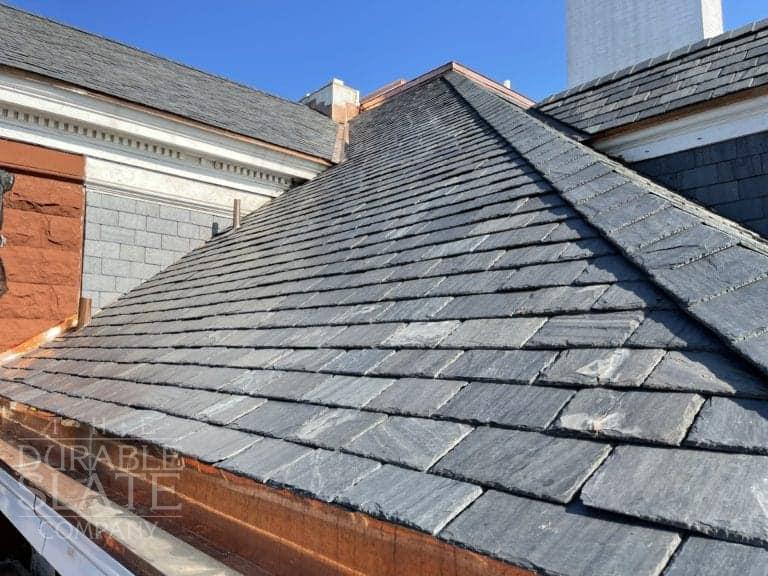The Advantages of Collaborating With Gainesville FL Roofing Companies
The Advantages of Collaborating With Gainesville FL Roofing Companies
Blog Article
Finest Practices for Ensuring Proper Roofing Ventilation
A well balanced intake and exhaust air vent proportion, commonly 1:300, plays a critical function, with intake vents preferably placed at the lower edge of the roof covering for trendy air entrance and exhaust vents at the peak for warm air departure. Maintaining insulation away from vents is crucial to stop air movement constraint.
Understand Air Flow Basics
Correctly recognizing air flow essentials is important for guaranteeing the long life and performance of roof. Effective ventilation alleviates wetness build-up and temperature level extremes in the attic room, both of which can lead to significant structural damage in time. A well-ventilated roofing system assists in protecting against usual concerns such as mold growth, wood rot, and ice dams, which can compromise the integrity of the roofing materials and the underlying structures.
The primary goal of ventilation is to facilitate the motion of air, permitting a regular exchange in between the interior and outside atmospheres. This balance is accomplished through a mix of intake and exhaust vents that collaborate to keep optimum air movement. Intake vents, normally situated along the eaves or soffits, permit fresh air to go into the attic room area, while exhaust vents, often located at or near the roof ridge, enable warm, humid air to escape.
Trick variables influencing the effectiveness of roofing ventilation include appropriate positioning, adequate sizing, and making sure that both intake and exhaust vents are unobstructed. Regular examination and upkeep are essential to determine prospective blockages, damage, or inefficiencies in the air flow system, thereby safeguarding the roof's performance and sturdiness.
Kinds Of Roof Covering Vents
Roofing system vents play an important duty in maintaining effective attic room air flow and, by extension, the overall health and wellness of the roof covering system. Numerous types of roof vents are offered, each with one-of-a-kind advantages tailored to particular roof demands.

Soffit vents are set up under the eaves and operate in tandem with roof vents to make sure a balanced intake and exhaust system. By permitting cooler air to go into from below, soffit vents promote the expulsion of hot air with top vents. Gable vents, located on the outside wall surfaces of the attic, offer another effective remedy, specifically in homes with gable roofings.
Assess Your Existing Ventilation

Following, consider the age and problem of your roof products and air flow parts. Older systems may not conform with present building ordinance or may have weakened in time, minimizing their effectiveness. Conduct a detailed examination to determine any signs of wear and tear, such as rust, damages, or spaces that could jeopardize the system's performance.
Additionally, determine the attic temperature level and moisture levels. Heats and humidity can suggest inadequate air flow - roofing companies in gainesville florida. Utilize a hygrometer and thermostat to obtain accurate analyses, contrasting them with outdoor problems. Relentless discrepancies suggest possible concerns that need addressing.
Setup Best Practices
Efficient setup of roof air flow systems is extremely important for making sure optimal performance and long life. Proper setup starts with comprehending the details air flow needs have a peek at these guys of the building and the roof it covers. This entails calculating the right ratio of consumption to tire vents, commonly sticking to the 1:300 rule, which specifies one square foot of ventilation for every single 300 square feet of attic room flooring room.

Intake vents must be installed at the roof covering's reduced side, typically in the soffits, to allow great air to enter. Exhaust vents, on the other hand, should be mounted visit here near or at the roof covering's top to assist in the leave of cozy, wet air.
Seal all air vent connections thoroughly to avoid air leakages and prospective water seepage. Use high-grade products and adhere to producer guidelines to make sure durability and efficiency. In addition, integrating ridge vents with baffles can considerably enhance airflow efficiency by stopping wind-driven rain and snow from entering the attic room.
Ultimately, accurate setup of roof ventilation systems alleviates possible concerns such as mold development, ice dams, and architectural damages, ensuring the roofing's integrity and the structure's overall wellness.
Regular Maintenance Tips
Consistency in maintenance techniques is basic to ensuring the long-lasting efficiency of roofing ventilation systems. Regular evaluations are important, preferably carried out biannually-- in the spring and fall. Throughout these examinations, guarantee that vents are cost-free of debris, nests, and various other obstructions that might hinder airflow. Inspect for any type of signs of wetness accumulation or mold and mildew, as these can indicate improper air flow or leaks (roofing companies gainesville florida).
Cleaning the vents is one more crucial task. Utilize a soft brush or a vacuum cleaner to get rid of dust and debris from consumption and exhaust vents. Beware not to harm the air vent screens or louvers during the process. Furthermore, check the attic space for any indications of water damages, which could jeopardize the stability of the roof.
Proper insulation is equally vital. Make certain that attic insulation does not block the vents, as this can seriously restrict air flow. If any insulation has actually moved or resolved, reposition or replace it to preserve an efficient obstacle.
Finally, replace any type of damaged or missing out on elements immediately. Damaged vents, look at these guys fractured roof shingles, or shabby flashing can all contribute to inadequate air flow and ought to be dealt with right away. Regular upkeep guarantees that the roof covering air flow system works efficiently, therefore prolonging the life expectancy of the roofing system itself.
Final Thought
Guaranteeing correct roofing air flow is paramount for preserving the effectiveness and longevity of a roof system. Adherence to the 1:300 consumption and exhaust vent proportion, coupled with the calculated positioning of vents, is important. Regular biannual assessments, particles cleaning, and making sure insulation does not obstruct air flow are critical methods. Implementing these ideal practices will certainly cultivate a well-ventilated roofing system, therefore minimizing potential concerns associated with moisture accumulation and excessive heat, ultimately extending the roofing system's lifespan.
A balanced intake and exhaust vent ratio, frequently 1:300, plays a crucial function, with consumption vents ideally put at the lower edge of the roofing for trendy air entry and exhaust vents at the top for warm air departure. Consumption vents, commonly situated along the soffits or eaves, enable fresh air to go into the attic room space, while exhaust vents, often located at or near the roof ridge, enable hot, damp air to run away.
Soffit vents are set up under the eaves and work in tandem with roof vents to guarantee a well balanced intake and exhaust system. By allowing cooler air to get in from below, soffit vents facilitate the expulsion of warm air through upper vents. Adherence to the 1:300 intake and exhaust vent ratio, combined with the critical placement of vents, is crucial.
Report this page